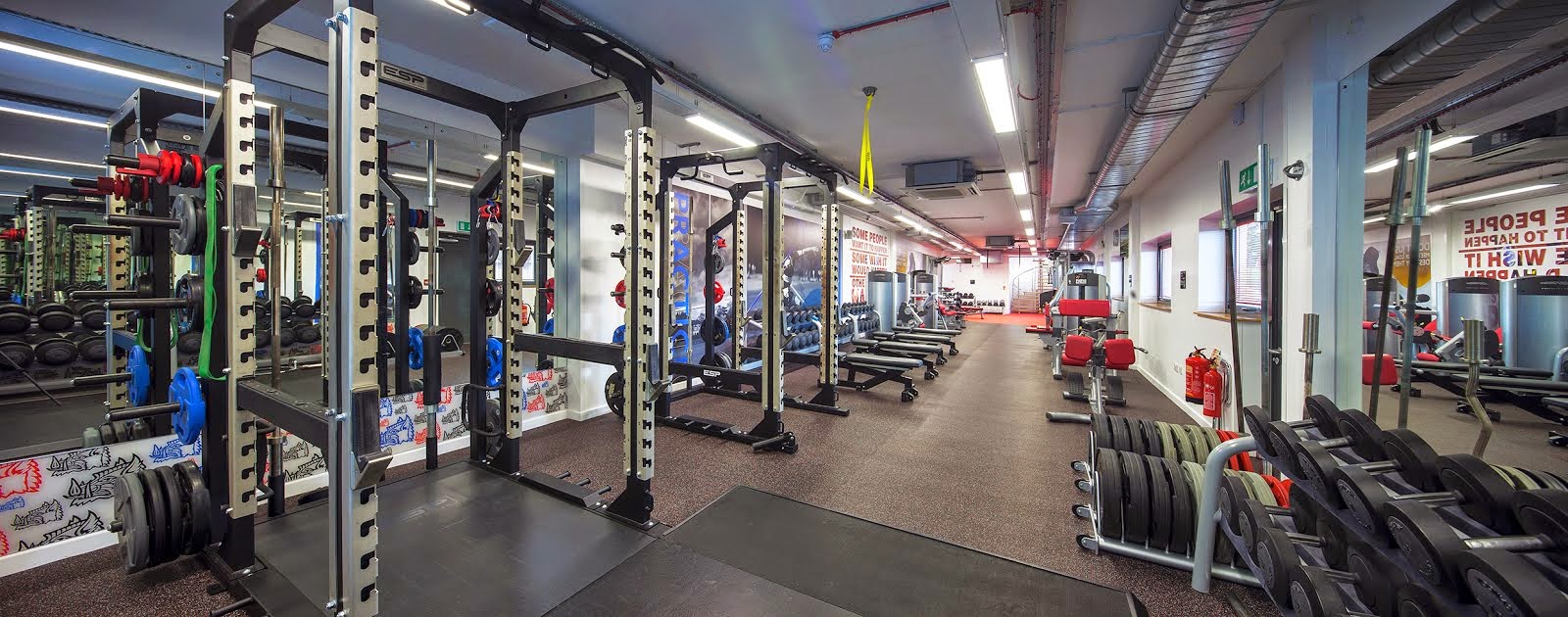Compound Fundamentals
Deadlift
- Stand with your feet under the barbell
- Bend down without lowering the hips and grip the barbell with your preferred grip outside of either leg.
- Bend your kness until your shins are touching the bar.
- Lift your head and chest to straighten your spine before lifting.
- From this position, continue the movement upwards, lifting with both your hips and knees simultaneously.
- Finish in a strong position with shoulders pinned back and hips pushed forwards against the bar.
- Return the bar to the floor through the reverse sequence taking care to keep the barbell as close to your body as possible.
Back Squat
- Set up the squat rack with the bar racks set at shoulder height and the safety bars set to just above your hips.
- Duck under the bar and rest it on your traps at the top of your shoulders, not your neck.
- Have your feet slightly wider than hip width at approxiamately the distance apart they would be for performing a standing jump.
- The squatting movement should resemble that of sitting on a stool, with the hips 'clearing' (moving backwards) as the knees begin to bend, this will also keep your back straight so try to use this as the catalyst for the whole movement.
Power Upright Row
- Lift the bar from the floor as you would during a standard deadlift.
- Once at the top, return the bar to approximately knee height maintaining spine angle as shown below.
- From this position, complete the remainder of the upwards phase of the deadlift powerfully so that the bar can continue to move past its usual resting point.
- Using your shoulders, keep the bar moving upwards, keep your elbows above your hands at all times to utilise your shoulders as much as possible.
- Bring the bar as close to your collarbones as possible before allowing it to return to the rest position at the top of the deadlift.
- As with all compound exercises, try to keep the weight close to your body throughout to avoid injury.
Push Press
- Set the squat rack up as you would do for a squat, with the bar racks at shoulder height. The safety bars may not be required.
- Lift the bar from the racks and hold it in a relaxed position across the front of the chest. (Clean hang).
- Bend at the hips and knees slightly before each repetition.
- As your legs straighten explosively, drive the bar overhead until your arms are straight.
- Carefully lower the bar back to shoulder height, once again bending at the hips and knees to 'catch' the weight as it falls.
- Repeat, remembering to use your legs throughout the entire set.
What to do....
Each of these exercise uses a key aspect of more advanced, dynamic compound lifts which can be learnt in due course. Establish a solid foundation by perfecting the exercises shown here with particular emphasis on form and fluidity of movement as opposed to weight.
To do this effectively, keep the weight the same for all four exercises-this will help you to improve strength in the areas you are weaker whilst developing the explosive power and speed of movement required for compound lifting in elements such as the deadlift and squat.
Perform 3-4 sets of 6-8 reps of each exercise.





No comments:
Post a Comment